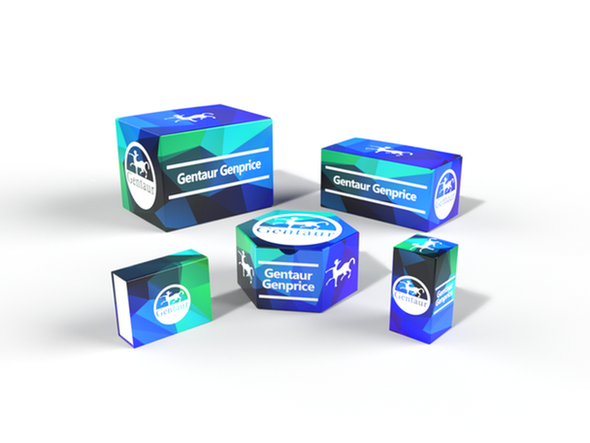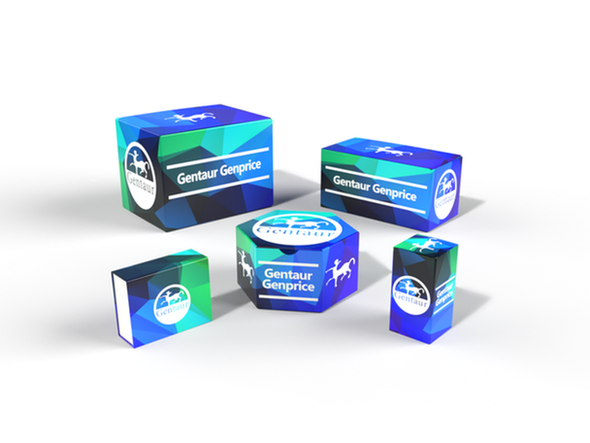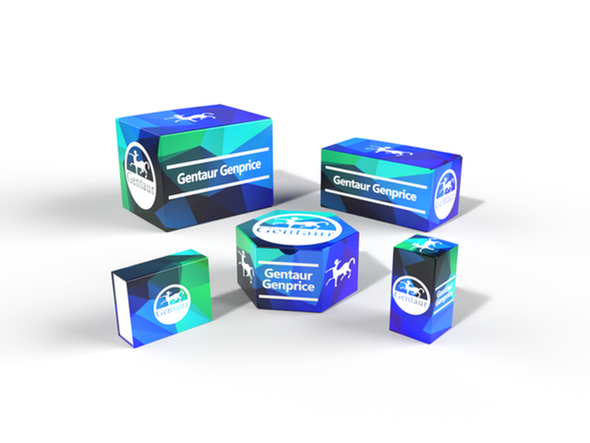Description
SLC9A7 Antibody | 25-921 | Gentaur UK, US & Europe Distribution
Host: Rabbit
Reactivity: Human, Mouse
Homology: N/A
Immunogen: Antibody produced in rabbits immunized with a synthetic peptide corresponding a region of human SLC9A7.
Research Area: Membrane, Signal Transduction
Tested Application: E, WB
Application: SLC9A7 antibody can be used for detection of SLC9A7 by ELISA at 1:312500. SLC9A7 antibody can be used for detection of SLC9A7 by western blot at 1 μg/mL, and HRP conjugated secondary antibody should be diluted 1:50, 000 - 100, 000.
Specificiy: N/A
Positive Control 1: Cat. No. 1205 - Jurkat Cell Lysate
Positive Control 2: N/A
Positive Control 3: N/A
Positive Control 4: N/A
Positive Control 5: N/A
Positive Control 6: N/A
Molecular Weight: 80 kDa
Validation: N/A
Isoform: N/A
Purification: Antibody is purified by peptide affinity chromatography method.
Clonality: Polyclonal
Clone: N/A
Isotype: N/A
Conjugate: Unconjugated
Physical State: Liquid
Buffer: Purified antibody supplied in 1x PBS buffer with 0.09% (w/v) sodium azide and 2% sucrose.
Concentration: batch dependent
Storage Condition: For short periods of storage (days) store at 4˚C. For longer periods of storage, store SLC9A7 antibody at -20˚C. As with any antibody avoid repeat freeze-thaw cycles.
Alternate Name: SLC9A7, NHE7, SLC9A6, NHE-7
User Note: Optimal dilutions for each application to be determined by the researcher.
BACKGROUND: Organelles of the secretory and endocytic pathways are distinguished by their luminal acidity, which is generated by the activity of an electrogenic vacuolar-type hydrogen ATPase. Progressive acidification of vesicles in the endocytic pathway is essential for the redistribution and degradation of internalized membrane proteins, such as ligand receptor complexes and fluid-phase solutes. It may play an important role in maintaining cation homeostasis and function of the trans-Golgi network.Organelles of the secretory and endocytic pathways are distinguished by their luminal acidity, which is generated by the activity of an electrogenic vacuolar-type hydrogen ATPase. Progressive acidification of vesicles in the endocytic pathway is essential for the redistribution and degradation of internalized membrane proteins, such as ligand receptor complexes and fluid-phase solutes. This gene is expressed predominantly in the trans-Golgi network, and mediates the influx of sodium or potassium in exchange for hydrogen. It may thus play an important role in maintaining cation homeostasis and function of the trans-Golgi network. This gene is part of a gene cluster on chromosome Xp11.23.Organelles of the secretory and endocytic pathways are distinguished by their luminal acidity, which is generated by the activity of an electrogenic vacuolar-type hydrogen ATPase. Progressive acidification of vesicles in the endocytic pathway is essential for the redistribution and degradation of internalized membrane proteins, such as ligand receptor complexes and fluid-phase solutes. This gene is expressed predominantly in the trans-Golgi network, and mediates the influx of sodium or potassium in exchange for hydrogen. It may thus play an important role in maintaining cation homeostasis and function of the trans-Golgi network. This gene is part of a gene cluster on chromosome Xp11.23.






